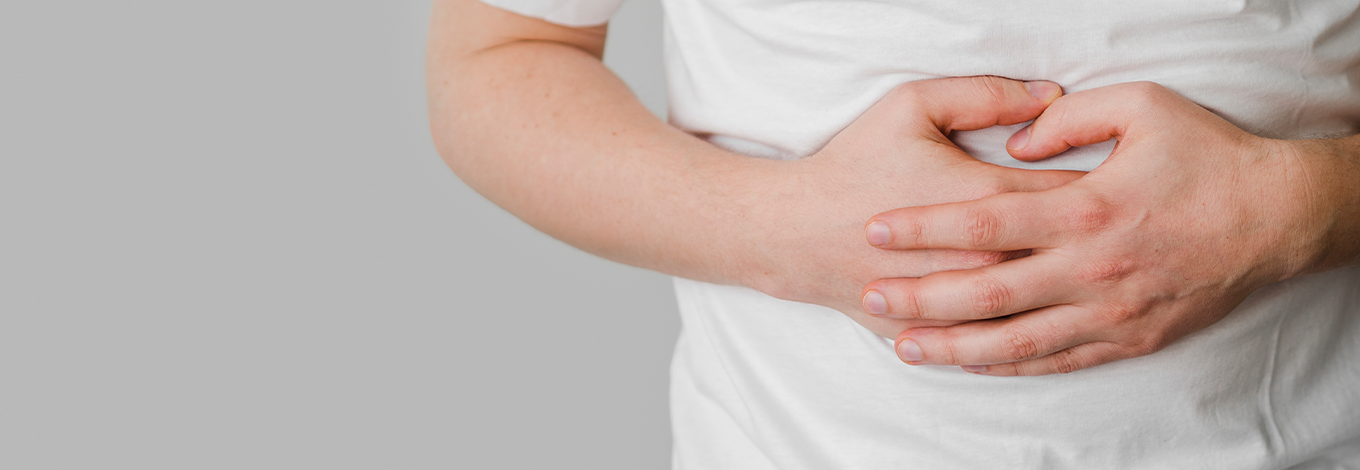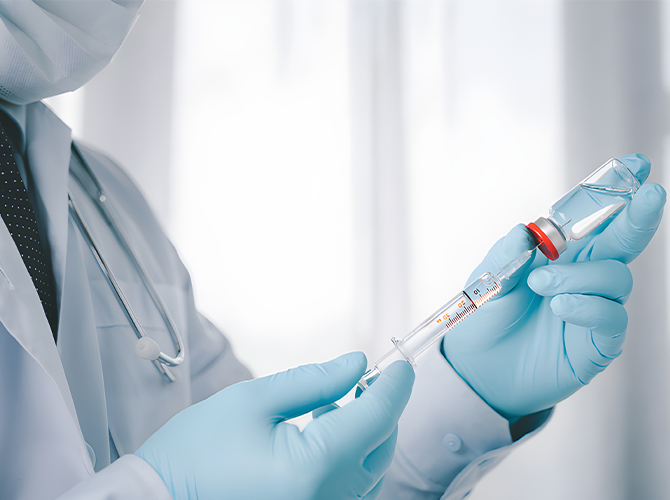About Suboxone
What is Suboxone & How does Suboxone work?
Suboxone is a brand name medication commonly prescribed by clinicians to treat opioid use disorder, and it’s a combination of two medications: buprenorphine and naloxone.
Buprenorphine helps relieve symptoms of opioid withdrawal, suppresses cravings, and reduces overdose risk. Naloxone prevents the medication from being injected or misused. The FDA has also approved generic versions of Suboxone.
Buprenorphine acts like a partial opioid in the brain, which is different from methadone, oxycodone, heroin, and fentanyl. Because buprenorphine is a partial opioid, it reduces opioid cravings and withdrawal, but it does not result in the euphoric symptoms, or “high,” that people experience with full opioids. And further, because buprenorphine is a partial opioid, it has a ceiling effect—this means that after a certain dose, there is no additional opioid effect, which ultimately decreases the risk for overdose.
Naloxone (commonly known as Narcan) is an opioid antagonist, which means it blocks opioids in the brain. The combination of buprenorphine with naloxone discourages misuse of the medication.

What are the side effects of Suboxone?
All medications have potential side effects, and the same is true for Suboxone. Fortunately, Suboxone side effects are uncommon and tend to be mild. Common Suboxone effects include nausea, headache, dizziness, fatigue, insomnia, excessive sweating, and stomach cramps.
As with any new medication, we recommend patients refrain from driving or engaging in other potentially hazardous activities until they know how their bodies will react. Otherwise, the use of Suboxone as prescribed causes no activity limitations.
Should I take Suboxone strips (AKA Suboxone films) or Suboxone pills (AKA Suboxone tablets)?
Although Suboxone typically comes in a film formulation (strips), you can find generic buprenorphine/naloxone in tablet form as well (pills). Suboxone films/strips and tablets/pills are equally effective for the treatment of opioid use disorder, including cravings, withdrawal, and overdose prevention. Films and tablets have the same strength, and one is not stronger than the other.
Insurance companies often dictate which formulation (films vs tablets) is covered, thereby determining the type of prescription.
A couple pertinent points:
Suboxone tablets are often less expensive than films, which is important to know for patients paying out-of-pocket for their medication.
Patients may say they prefer the taste of one over the other, but this preference is very individualized.
At the end of the day, both tablets and pills can be effective in recovery. Which one you choose will be a decision you and your doctor will make together – taking into account your past medical history and what’s covered under your insurance.
How do I take Suboxone?
How to use the sublingual Suboxone pills (AKA Suboxone tablets):
Drink water before taking the tablet(s) to help moisten your mouth.
Do not cut, crush, chew, or swallow the tablet(s).
Place the tablet(s) beneath the tongue and keep there until completely dissolved. This generally takes less than 15 minutes. If you take 2 or more tablets at a time, place all tablets in different locations beneath the tongue.
Do not eat or drink anything until the tablets are completely dissolved.
How to use the sublingual Suboxone strip
Drink water before taking the strip(s) to help moisten your mouth.
Do not cut, chew, or swallow the strip(s).
Place the strip(s) beneath the tongue and keep there until completely dissolved. This generally takes less than 15 minutes.
If you take 2 or more strips at a time, place the films in different locations beneath the tongue.
What is the Suboxone spit trick?

What are the alternatives to Suboxone?
Medication for opioid use disorder (MOUD) includes buprenorphine, methadone, and naltrexone—all of which act to reduce opioid cravings, withdrawal symptoms, and overdose risk. Buprenorphine is one component of Suboxone.
Buprenorphine, methadone, and naltrexone are approved by the United States Food & Drug Administration (FDA) for this purpose, and MOUD is most effective when used in conjunction with counseling and psychosocial support.
Methadone is a long-acting opioid agonist, which means that it resembles other opioids like oxycodone, heroin, and fentanyl. It functions by saturating opioid receptors in the brain, ultimately blocking, or blunting, the effects of other opioids. When compared to methadone, buprenorphine has many advantages:
Buprenorphine/naloxone (Suboxone) is widely considered to be safer than methadone and has a lower risk for sedation and overdose when taken as prescribed.
The recommended effective dose is well-known and can be safely reached within 1-2 days for most patients, whereas effective methadone dosing varies unpredictably from person-to-person and may take weeks to achieve: and
Buprenorphine/naloxone (Suboxone) can be prescribed by licensed and trained medical providers in any treatment setting, whereas methadone is strictly regulated and can only be provided through federally licensed outpatient treatment programs. Naltrexone is an opioid antagonist that saturates opioid receptors in the brain, which prevents individuals from experiencing the euphoric effects of drugs like heroin or fentanyl. It is essentially a “blocker” and reduces cravings for both opioids and alcohol.
When should I start taking Suboxone?
- 12-24 hours for short-acting opioids (heroin, oxycodone, Percocet, Vicodin, Dilaudid).
- 36 hours for intermediate-acting opioids (fentanyl, Oxycontin, MS Contin); and
- 48-72 hours for long-acting opioids (methadone).
What are common opioid withdrawal symptoms?
Withdrawal symptoms include the following: Opioid withdrawal symptoms are uncomfortable, but there are opioid withdrawal treatments your medical provider can prescribe to help relieve these symptoms. Clonidine helps reduce anxiety, irritability, muscle aches, sweating, and runny nose. Loperamide (Imodium) helps relieve diarrhea.
Opioid withdrawal symptoms are uncomfortable, but there are opioid withdrawal treatments your medical provider can prescribe to help relieve these symptoms. Clonidine helps reduce anxiety, irritability, muscle aches, sweating, and runny nose. Loperamide (Imodium) helps relieve diarrhea.
- Muscle aches
- Restlessness
- Anxiety
- Tears
- Runny nose
- Excessive sweating
- Inability to sleep
- Yawning
- Fatigue
- Diarrhea
- Abdominal cramping
- Goosebumps on skin
- Nausea & vomiting
- Blurry vision
- Rapid heartbeat
- High blood pressure

Bentyl helps relieve gastrointestinal (GI) symptoms, especially abdominal cramping. And lastly, once you start the induction and stabilization phase with Suboxone, you will experience significant reduction and relief from withdrawal symptoms.
Naltrexone extended-release injection (Vivitrol®) is used along with counseling and social support to help people who have stopped drinking large amounts of alcohol to avoid drinking again. Naltrexone injection is also used along with counseling and social support to help people who have stopped abusing opiate and opioid medications or street drugs to avoid abusing the medications or street drugs again. Naltrexone acts as an antagonist to the dopamine receptors minimizing cravings and blocking euphoria. In injectable form (known as Vivitrol®) an individual only needs the drug administered monthly. Naltrexone is often confused as being similar to methadone or suboxone, when in fact, it is a non-addictive substance; there are no withdrawal symptoms from terminating usage.
Librium (chlordiazepoxide hydrochloride) comes in capsule form and is taken orally according to our prescribing doctor’s instructions. The medication works by boosting your brain’s natural calming agent GABA (gamma-aminobutyric acid). GABA enables certain signals in the brain to either slow or stop, creating a tranquilizing, sedating effect. It’s classified as a benzodiazepine and helps to reduce anxiety, halt seizures, relax muscles and create a sleepy or drowsy feeling. Because of these effects, Librium can be helpful in controlling some of the symptoms associated with withdrawal from alcohol and drugs.
Baclofen has demonstrated initial clinical efficacy in reducing cocaine use during cocaine addiction when delivered concurrent with thrice-weekly drug abuse counseling sessions. The effects of baclofen were particularly apparent for those participants with chronic levels of cocaine addiction at baseline and provide support for a full-scale efficacy trial for baclofen, especially among this subgroup of patients. This medication is typically used with clients who have cocaine addiction.
You can review a sample induction protocol provided by the American Society of Addiction Medicine here.
How long does Suboxone stay in the system?
Buprenorphine/naloxone (Suboxone) stays in your system for 28-42 hours after sublingual administration (under the tongue), which is the most common route for Suboxone treatment. Intramuscular, intravenous, and transdermal formulations have varying half-lives in your bloodstream.
Can you get high on Suboxone?
It’s very hard to get “high” on Suboxone. The people who might experience a little bit of a “high” are those who’ve never used opioids and/or have NO opioids in their system… for these folks, when a partial opioid agonist like buprenorphine is introduced, it might produce some euphoria. However, this is not true for patients with active opioid use disorder who are accustomed to full opioid agonists (e.g., oxycodone, heroin, fentanyl) in their system.
Can you overdose on Suboxone?
Buprenorphine/naloxone (Suboxone) has a ceiling effect when it comes to respiratory depression. Because of this, Suboxone is considered very safe and low-risk for overdose when used alone. All overdose incidences while Suboxone was in the system involved high doses of benzodiazepines, and thus, there is some risk when used in conjunction with other substances.
Does Suboxone show up on drug tests?
Buprenorphine is not part of the standard drug screen. So, for buprenorphine/naloxone (Suboxone) to show up on a urine or saliva drug screen, it must test specifically for buprenorphine. If you’re prescribed Suboxone by a medical provider, then you have legal protections from employment discrimination.
Is it safe to taper/stop Suboxone?
Medication for opioid use disorder (MOUD) is critical to prevent overdose and death. Research shows that with MOUD, 75% of patients will still be in recovery one year later. Conversely, studies demonstrate that within one month of stopping buprenorphine treatment, more than 50% of patients relapse to illicit opioid use. Benefits of Suboxone include helping patients to feel normal and healthy, and when taken as prescribed by a medical provider, it treats addiction and does not cause the negative impacts of uncontrolled substance use on one’s life, goals, and daily functioning.
Thus, we do not recommend patients stop taking Suboxone. Addiction is a chronic condition, and because of that, we recommend long-term use of Suboxone. Just like patients with diabetes or high blood pressure must take daily medications to stay healthy, patients with addiction must do the same. Our program is a long-term, continuous program that supports patients over months-to-years, which is supported by evidence-based medicine. You can learn more here about why Suboxone is NOT “just trading one drug for another.”
However, if patients are adamant that they’d like to wean off Suboxone—despite knowing the risks—our providers help patients to develop the safest possible treatment plan while also assisting patients in meeting their goals for recovery.
How To Prep for Suboxone Treatment
Transitioning from opioids to buprenorphine/naloxone (Suboxone) can be an intimidating process. Thinking about giving up opioids after being dependent on them can be daunting, as can the actual transition (also called “induction”). Some people have had the unpleasant experience of trying to take buprenorphine/naloxone (Suboxone) without going through opioid withdrawal first, which can make someone feel very ill, although it is generally not dangerous.
Most people who are dependent on opioids have felt withdrawal symptoms at one time or another. Withdrawal from opioids can include obvious symptoms like nausea/vomiting/diarrhea, anxiety, and restlessness, as well as less obvious symptoms like dilated (large) pupils and gooseflesh.
It is true that you will have to go through some withdrawal symptoms to transition from opioids to buprenorphine/naloxone (Suboxone). The care team will be with you along the way to ensure a transition that is as safe and comfortable as possible.
Why do I have to go through withdrawal symptoms?
Opioids act at the “opioid receptors,” which are proteins throughout the body where opioids carry out functions like pain relief and euphoria. Buprenorphine sticks in those receptors much more strongly than opioids and kicks opioids out of the receptors. When this happens, the patient can experience sudden and severe withdrawal symptoms called “precipitated withdrawal.” By going through moderate withdrawal prior to taking buprenorphine/naloxone (Suboxone), this “precipitated withdrawal” can be avoided.
Despite withdrawal symptoms, it is considered safe and effective for most patients to start buprenorphine/naloxone (Suboxone) at home in a comfortable and familiar environment, without the dangers of driving while in withdrawal or taking a new medication. In the COVID-19 era, self-management with expert support is even more critical to avoid potential exposure to the virus in healthcare settings. Your medical provider can assist you in deciding if this is the right path for you.


Different opioid types require different lengths of time to achieve sufficient withdrawal to start buprenorphine/naloxone (Suboxone). The following examples are rough estimates of the hours it takes to withdrawal from various substance, which also varies from person to person:
- Short-acting opioids including heroin, oxycodone/Percocet, hydrocodone/Vicodin/Lortab, and kratom: approximately 12-16 hours
- Long-acting opioids including Oxycontin, MSContin, Opana ER: approximately 20-24 hours
- Methadone: approximately 48 hours
- Fentanyl: approximately 72 hours but varies by method of use
How do I prepare for opioid withdrawal and Suboxone induction?
The best way to prepare for induction is to consult with your medical provider and have all your questions answered ahead of time. Our providers will walk you through the process before you start your first medication.
Make sure that you have your medications (including buprenorphine/naloxone (Suboxone) and comfort medications) before you start the withdrawal process so that you do not have to go to the pharmacy once you start to feel ill.
Prepare a comfortable environment at home with a bathroom nearby, as you may have unpleasant symptoms such as vomiting and/or diarrhea
How do I manage withdrawal symptoms?
Your medical provider can select targeted medications that help with specific withdrawal symptoms such as diarrhea, nausea, anxiety, and muscle aches.
Stay in your comfortable, safe, and private environment with a bathroom nearby. You can use distraction techniques, meditation, or other comfort measures that work for you.
Use the withdrawal tool to help measure severity and assess when you are ready to take buprenorphine/naloxone (Suboxone) by assigning a numerical score to each symptom. A similar tool can be found here.
Listen to your body. Keep in mind that if you are feeling so ill that you do not feel you can tolerate any further withdrawals, you are most likely ready to start a small amount of buprenorphine/naloxone (Suboxone). Check your symptoms against the withdrawal severity tool to be sure.
If you feel something is wrong (such as so much vomiting that you become dehydrated), contact us during business hours or consider going to urgent care/the emergency room after hours. Home induction of buprenorphine/naloxone (Suboxone) is considered to be safe for most individuals, and it is rare that emergency help is needed.

The First 10 Days
Day 1
Meet with your medical provider for assessment by a “telemedicine” platform where the provider and patient can see each other via the internet.
Receive written instructions on how to safely start buprenorphine/naloxone (Suboxone).
Receive a short prescription for buprenorphine/naloxone (Suboxone) and comfort medications if you meet the criteria for opioid use disorder (addiction to opioids). The medical providers usually prescribes about 12mg of buprenorphine/naloxone (Suboxone) the first day, followed by an increase to 16mg on day 2.
What you do at home?
Stop your opioids and allow the withdrawal process to begin.
- Monitor your symptoms using our tool to measure withdrawal severity.
- Take comfort medications as needed.
- Start a small amount of buprenorphine/naloxone (Suboxone) when your withdrawal is severe enough when measured on the SOWS scale.
Day 2-3 (or one day after your anticipated start)
- Meet with your medical provider again to assess your status, make appropriate medication adjustments, and answer any questions.
- Receive instructions and prompts to complete urine or saliva drug screens at home.
What you do at home
- Continue your 12mg dose of buprenorphine/naloxone (Suboxone) or increase it to 16mg (based on provider’s guidance).
- Monitor your symptoms – especially cravings and withdrawals – to report back to your medical provider at each visit.
- Complete the first urine or saliva drug screen at home and show results via your cell phone camera.
Day 7-10
- Meet with your medical provider periodically to assess your status, make appropriate medication adjustments, and answer any questions.
What you do at home
- Monitor your symptoms – especially cravings and withdrawals – to report back to your medical provider at each visit.
After Day 10
- Once you feel comfortable on your dose, your medical provider will see you weekly until you are stable with appropriate drug screens.
Opioid withdrawal tips and tricks
Here are some tips and tricks to help you get through withdrawal symptoms and the induction process:
If you have supportive friends and family who are aware of your condition, enlist them to check on you periodically.
Plan to take a day or two off to make the transition from opioids to buprenorphine/naloxone (Suboxone). If you work, you might pick a weekend to start. If you have young children, make sure you have help caring for them if at all possible.
Do not intentionally start the withdrawal process prior to talking to your medical provider – it is difficult to communicate effectively when you are already feeling ill.
You do NOT need to cut down your opioid dose ahead of time. Cutting down opioid doses ahead of induction to buprenorphine/naloxone (Suboxone) rarely helps but does cause unnecessary discomfort.
Know that buprenorphine/naloxone (Suboxone) stops withdrawal symptoms in almost all patients, even those with severe withdrawals or high-dose opioids. If you do not feel that this medication is relieving your symptoms, please contact your medical provider for assistance.
